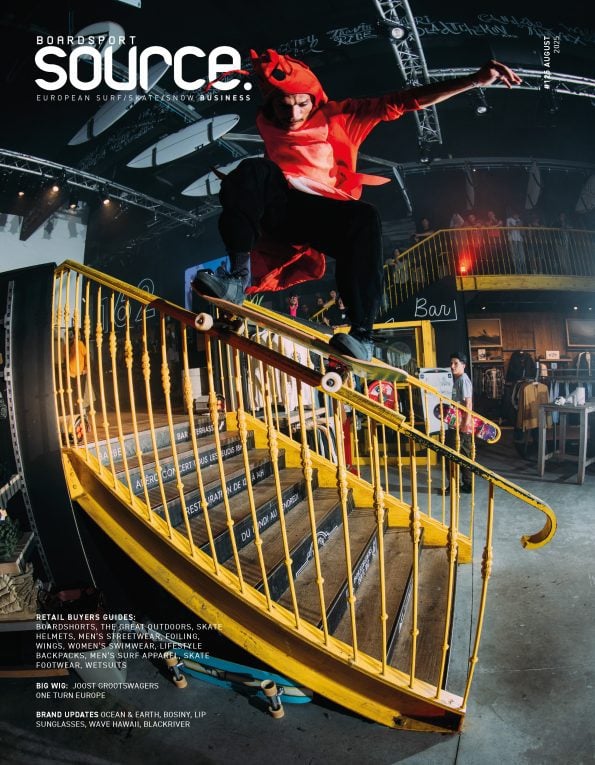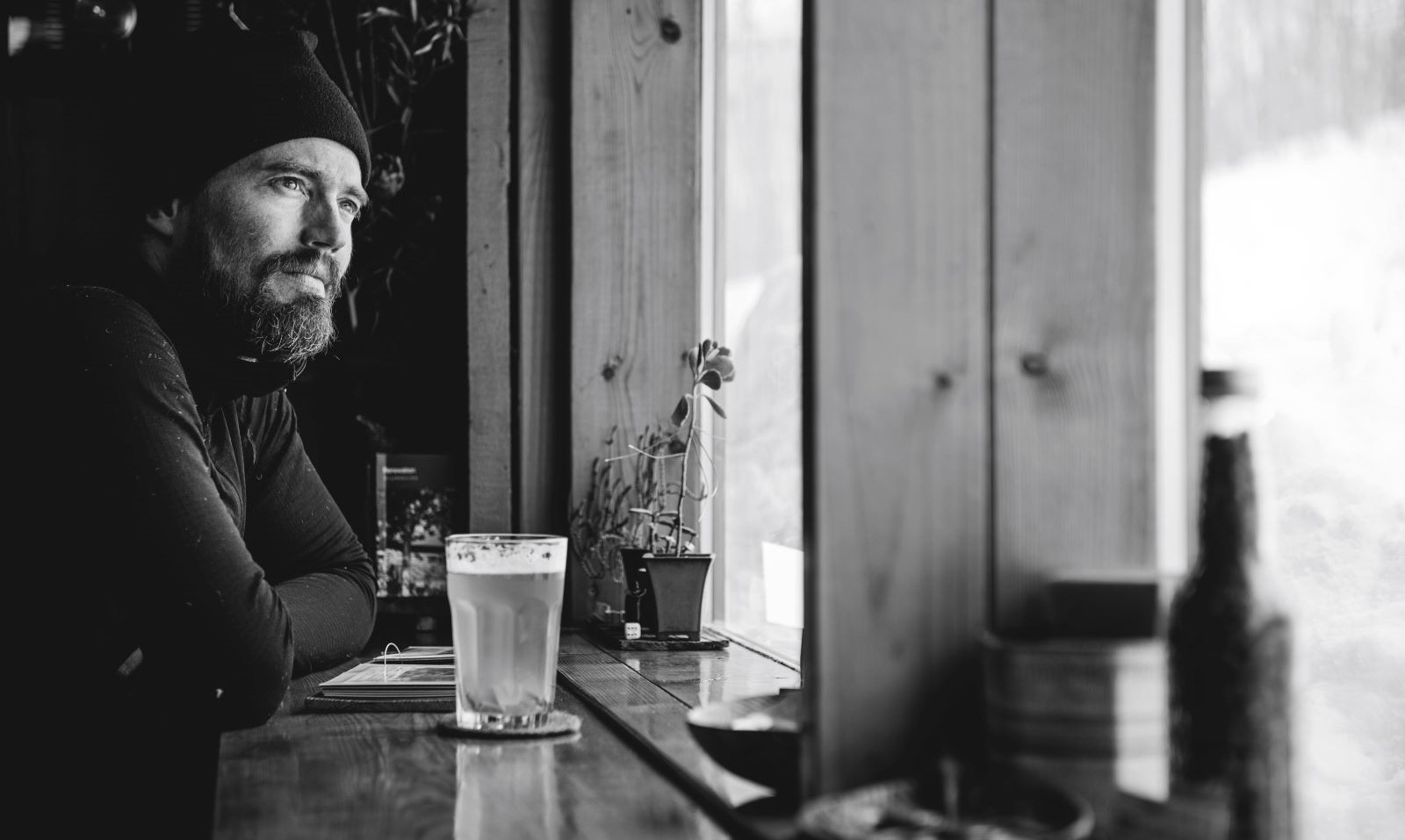
Big Wig: Nicholas Wolken Talks Korua’s Rise To Power
It’s been a huge four years since we first profiled Korua in our 78th issue, which makes their rise to power – and position as Big Wig in our 99th issue – extremely impressive. We speak to the brand’s Co-Founder Nicholas Wolken who grew up in the Swiss village of Küblis to see how finding snowboarding changed his life, leading to a pro career and then ultimately conceiving the brand while him and the other founders had “too much time at hand to dream and brainstorm.” The brand has become synonymous with their radical shapes and clean designs and capitalised on revolutionary snowboard filming (gimbal) and editing technology and style to capture and promote the essence of the brand – the love for the turn. Interview by Harry Mitchell Thompson.
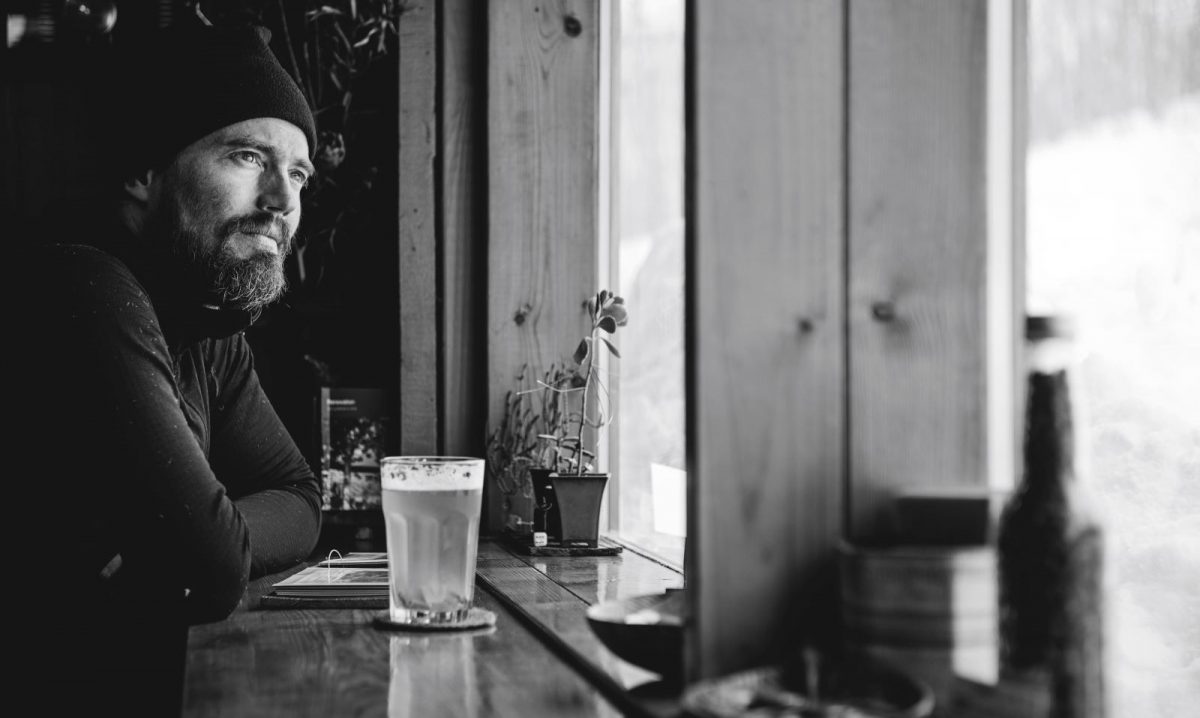
Nicholas Wolken. Photo by Aaron Schwartz
Nicholas, please tell us about your background in snowsports – how you came to starting Korua.
I grew up in a small village called Küblis – one of the longest ski slopes in the Alps ends up right in front of our house, so skiing and later snowboarding was part of my life early on. My dad used to work in a sport shop on the mountain; that’s were at age seven I saw my first snowboard – a 1983 swallow-tailed, super heavy, shiny, no flex, all fiberglass board called “Snowfish”. It just looked alien to me, really flashy, fun and fast which was very appealing. After bugging my old man, he let me have a go on it after he was done with work. That was the starting point, but I had to wait for two more seasons until Santa brought me Nidecker’s first kids board. After that, I remember seeing a billboard on the local hill – I think it was Peter Bauer laying down a super low, full body toe side carve in a bright neon outfit, which blew my nine year old mind and really set me off trying to carve my turns on the edge, rather than drifting them. I remember looking back up the slope to check my tracks and be sure I was only using the edges of the board.
I spent a few years just cruising our local resort, when one day my godfather took me to the ISF World Finals in Davos. Fadri Mosca and Martin Freinademez were tearing by us, risking it all. It got me interested in racing. So eventually I started riding alpine boards and competing, however I always enjoyed freeriding, so I took those boards into the backcountry and powder, I even rode the Davos pipe before and after gates training. At some point I ended up in sports school where I became friends with and looked up to (Markus) Keller and (Stephan) Maurer. I also noticed that I wasn’t really enjoying the pressure and vibe of FIS competitions and it seemed like there was more fun to be had on the other side of snowboarding. So I ditched the hard boots, finished school and jobbed all summer on the building site to save up for a season in Breckenridge and Mammoth, where I rode almost every day. After a few seasons of working summer jobs and riding all winter, I felt it was time to build some sort of future which would allow me to shred a lot. So I took the advice of my friend Alvaro Vogel and enrolled in the University of Innsbruck where we dreamt of being real pros and filmed for Truecolor films. Those days were some of the most fun to date. Life was pretty much obligation- and carefree, and we managed to ride lines in AK and Japan, which I will never forget. Then came Korua.
It’s been a huge 4 years since you founded the brand. Can you give us a timeline of ideological inception of the brand to current day?
Inspired by the snow surf movement we witnessed in Japan, it started with the idea of creating a European mini brand focused on powder-specific shapes. I guess we were just really lucky to have the right group of individuals (Stephan Maurer, Alvaro Vogel, Jerry Niedermeier, Bobby Selig and friends) in touch at that time, who were all really into snowboarding, but to some degree, couldn’t relate to it anymore. Also, having too much time at hand to dream and brainstorm helped a lot, there was definitely an energy in the air that we were on to something. We got the first prototypes in early autumn, so due to the lack of better options, we tried our no edge pow boards on bullet proof glacier hard pack. I remember how the boards felt similar to my old race boards and carved great. The following winter, we filmed a big part of the season in our home resorts, and at the same time Christoph Weber (now Thorensen) was experimenting with handheld gimbals on snow. I think having steady follow images and Stephan’s unique editing played a big part in transporting the actual feelings to the viewer. The carving wasn’t really a conscious idea or decision, but it grew naturally – I think to some part because of my background as a racer and because the wider boards just made it easier. Also, we just didn’t always have bottomless pow to ride, so it just so happened that we filmed on groomers. We have since been focusing on staying true to the initial ideas and have been steadily growing to where we are now.
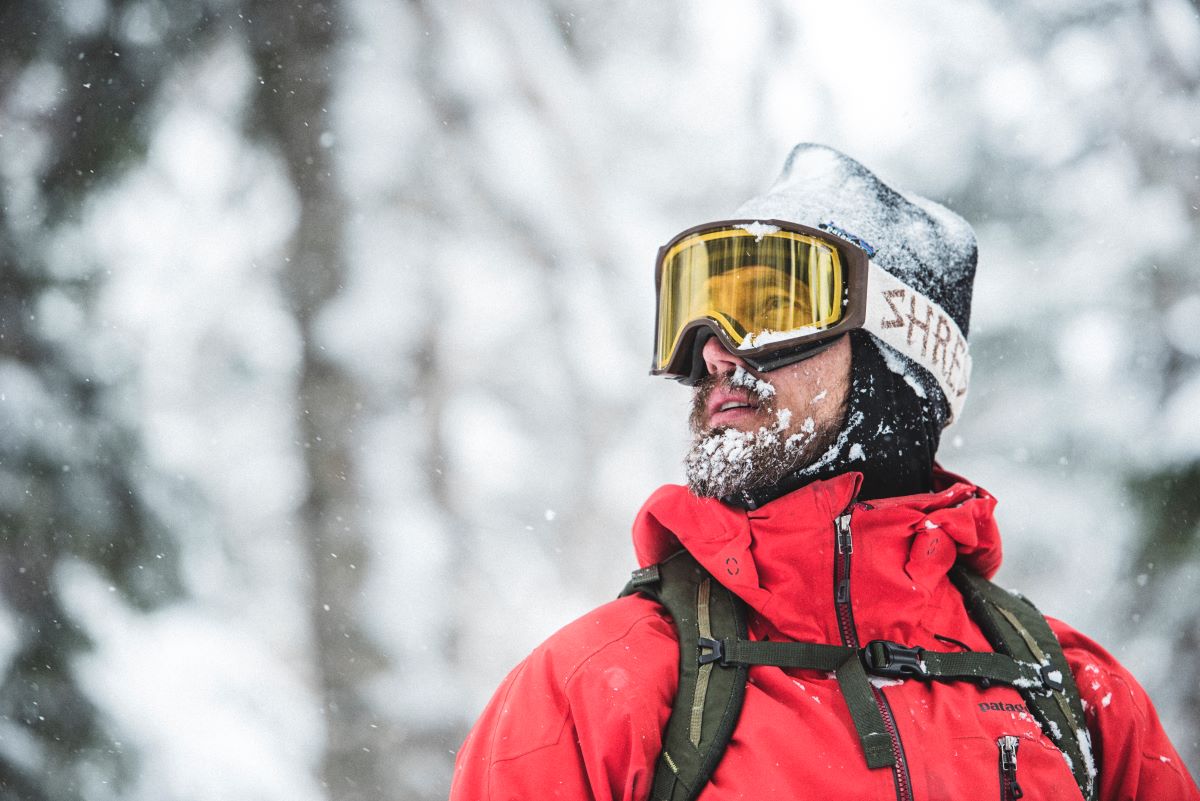
Photo by Aaron Schwartz.
Who’s been responsible for the creative direction of the brand?
In the very beginning, a lot of ideas came out of discussions within the core group as there weren’t clear responsibilities or roles at that time, but many of the ideas that came to play were thrown in or refined by Stephan, so eventually he took over the lead. Later on, Aaron Schwartz joined the team and they worked together. At the moment, Aaron is handling it and adding his signature twist.
Talk us through how pivotal your series of videos have been in marketing the brand.
I think they were and still are absolutely crucial for us. The edits made it all possible, they allowed us to reach out to the whole world and transport the idea and vibe of Korua. Personally, and I think the rest of the team would agree, that being able to get out and be creative is a big drive and source of energy in snowboarding. The edits were and still are short, relatable and strait up just capturing average resort days with the boys, and the occasional Japan week we get to do because we need to be over there at the trade shows.
And Japanese snowboard culture was a big inspiration in general for the brand… please talk us through that.
Powder-specific shapes, like swallowtails, have always been around in snowboarding, even in Europe. I mean Dupraz has been building sick boards for ages and even the bigger brands had one in the very back corner of the catalogue. So it wasn’t like we had never seen boards like that, but what really inspired us in Japan was the scene and community which had grown around a different mind-set and approach to snowboarding. We owe it to Japanese brands like Moss and Gentem’s Taro Tamai, who added a lot of style to it, started to spread the idea and build a community.
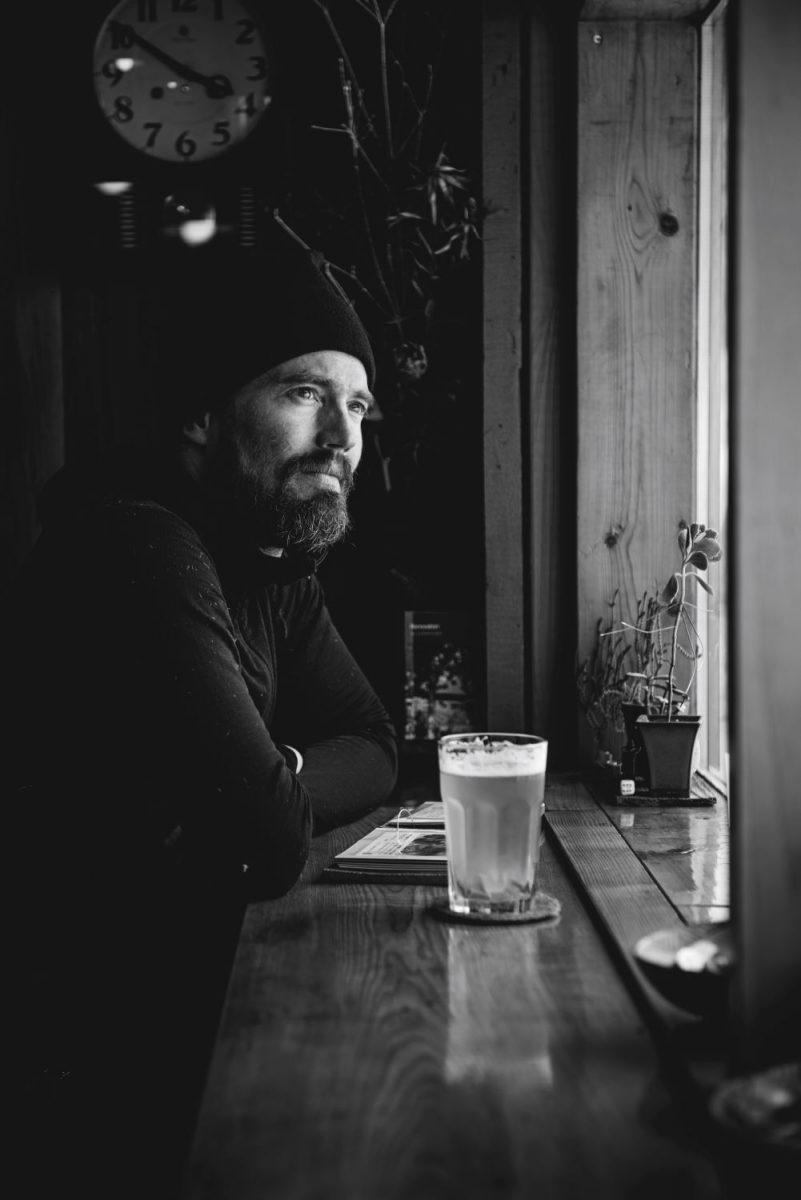
Photo by Aaron Schwartz
How are you working with retailers in harmony with a D2C strategy?
Of course, we are open about the fact that we are aiming to sell via our own web shop, but I guess the most important part is to make sure we all sell at the same price point. The shops have a local advantage, which is fine for us as they are crucial in offering personal advice and real product. I guess you will always have those customers who walk in the shop and buy online later, but it also goes the other way around. Often our shops profit when we have demo requests or we are out of a certain model. We then forward international customers’ requests to them. In the end it’s all about building good relationships.
Are you doing anything else innovative to aid retailers?
I think the fact that our product can be carried over from one season to the next by not changing the graphics and minimizing changes in build on existing models is pretty innovative. It prevents price dumping at the end of the season, and we also offer reorder possibilities throughout the season to reduce pressure on the shops.
Please tell us what you view as the threats and opportunities the snowboard industry faces at present.
Well I am not sure if I have enough of an understanding of the industry to properly answer the threat question, but I will give it a shot. I do worry about and see risk in the constant need for growth. The ‘bigger is better’ philosophy isn’t sustainable in my eyes – be it jumps, tricks, industry or company size. To be honest, I don’t worry too much whether the industry is at risk because the smaller it gets, the more soul will be in it. That makes me believe it’s going to stick around and develop in the direction it’s meant to. Very small companies or one man shows tend to be more focused on their personal need, which has been overlooked by the big players in the industry who are focusing on numbers. Take Phantom bindings as an example. Snowboarding is just too much fun and versatile to die, so I think innovative products will keep coming and keep the spirit alive.
Any plans to diversify your category assortment?
We have some new models coming out adding to the range and some new ideas in the pipeline, but I don’t want to offer a new shape just for the sake of it. It should fill a gap or offer some performance aspect the other boards don’t. We are also planning to build more lengths of specific shapes.
Why has Korua been so successful?
Well I guess early on we were lucky to have tapped into our own unfulfilled needs in snowboarding, which happened to be the need of many snowboarders. I know this is true for myself but I think we made it possible for many snowboarders, not just to be in awe of snowboarding, but actually feel part of it again. As a small company we can react fast and it’s easier to implement new ideas. Also listening to the opinions of riders who are very passionate, but not part of or dependent on the industry, helped us lot.




